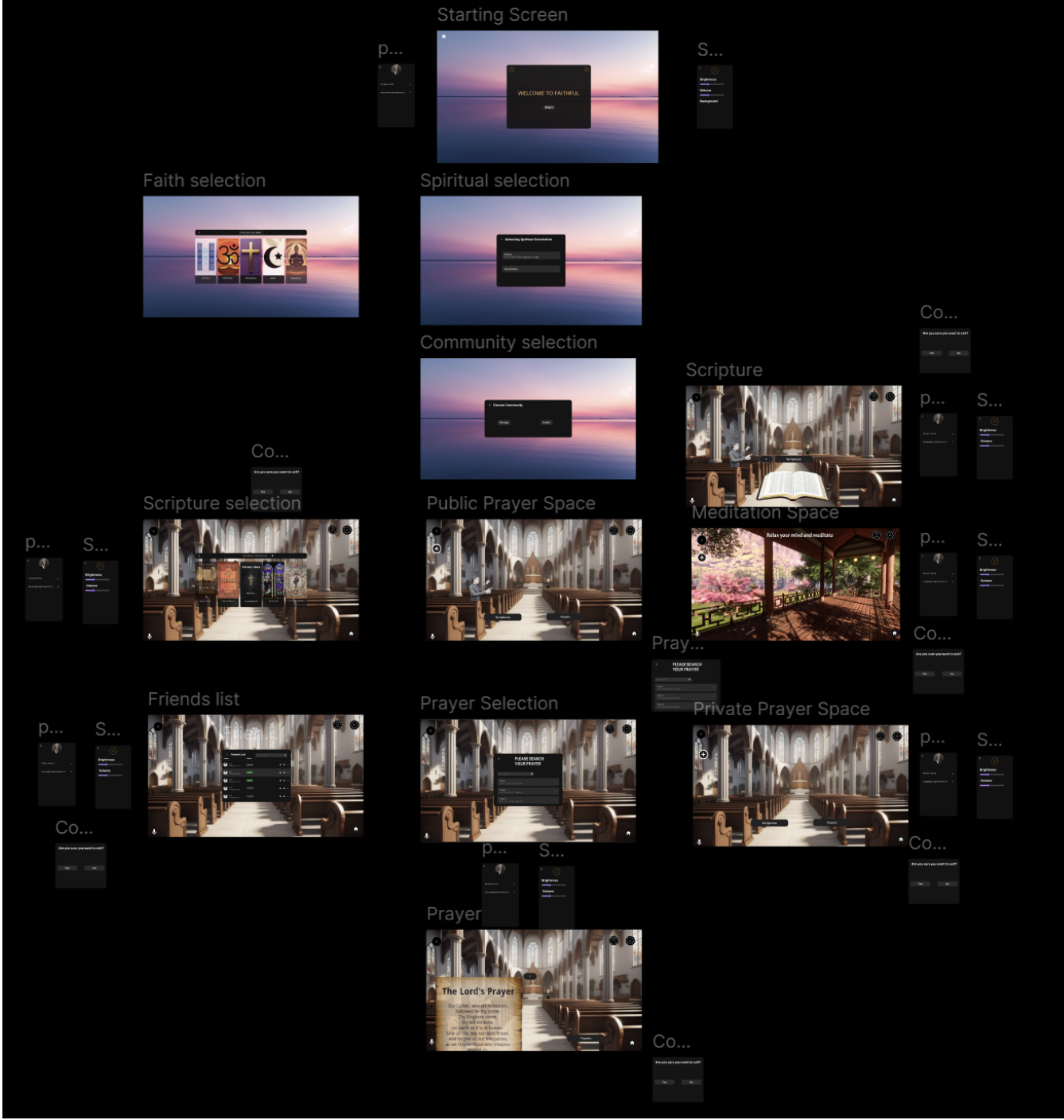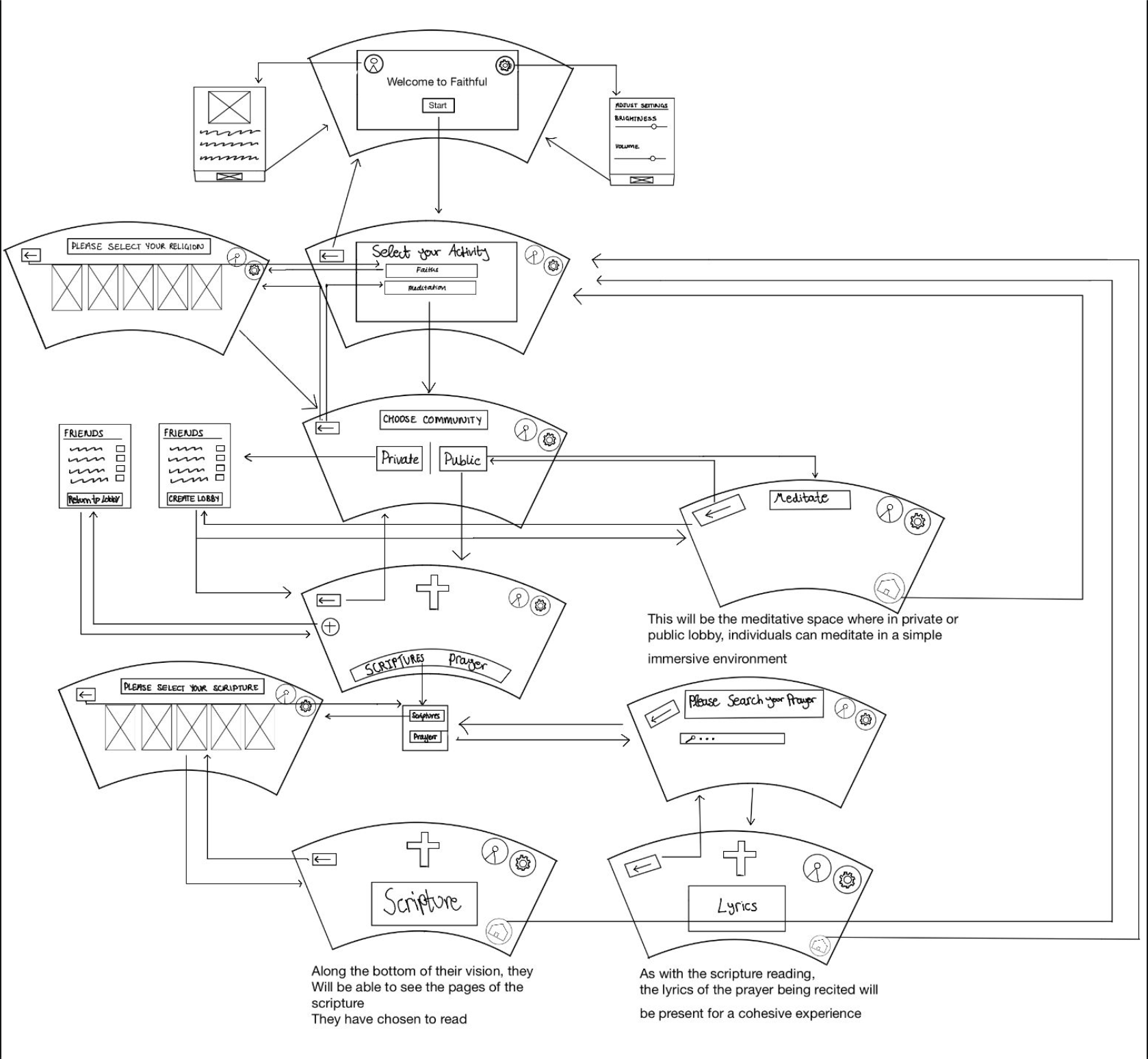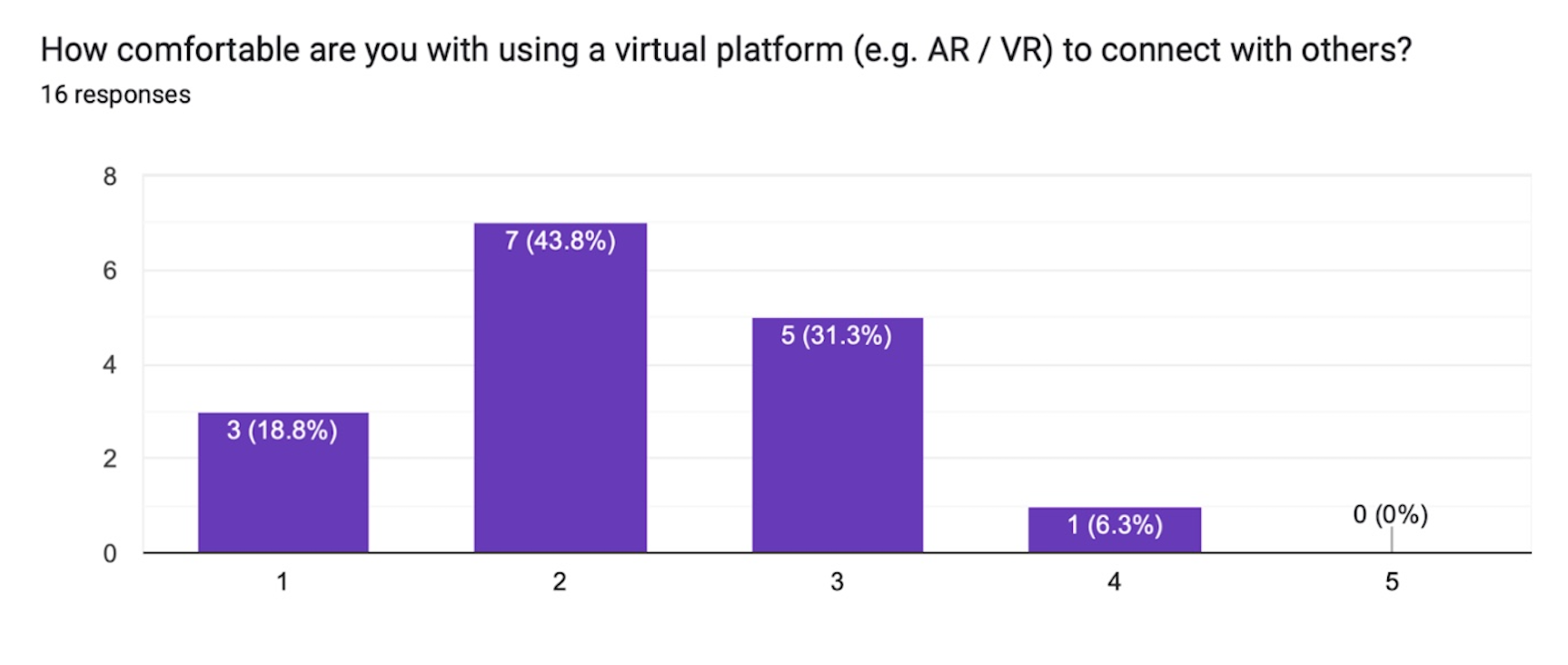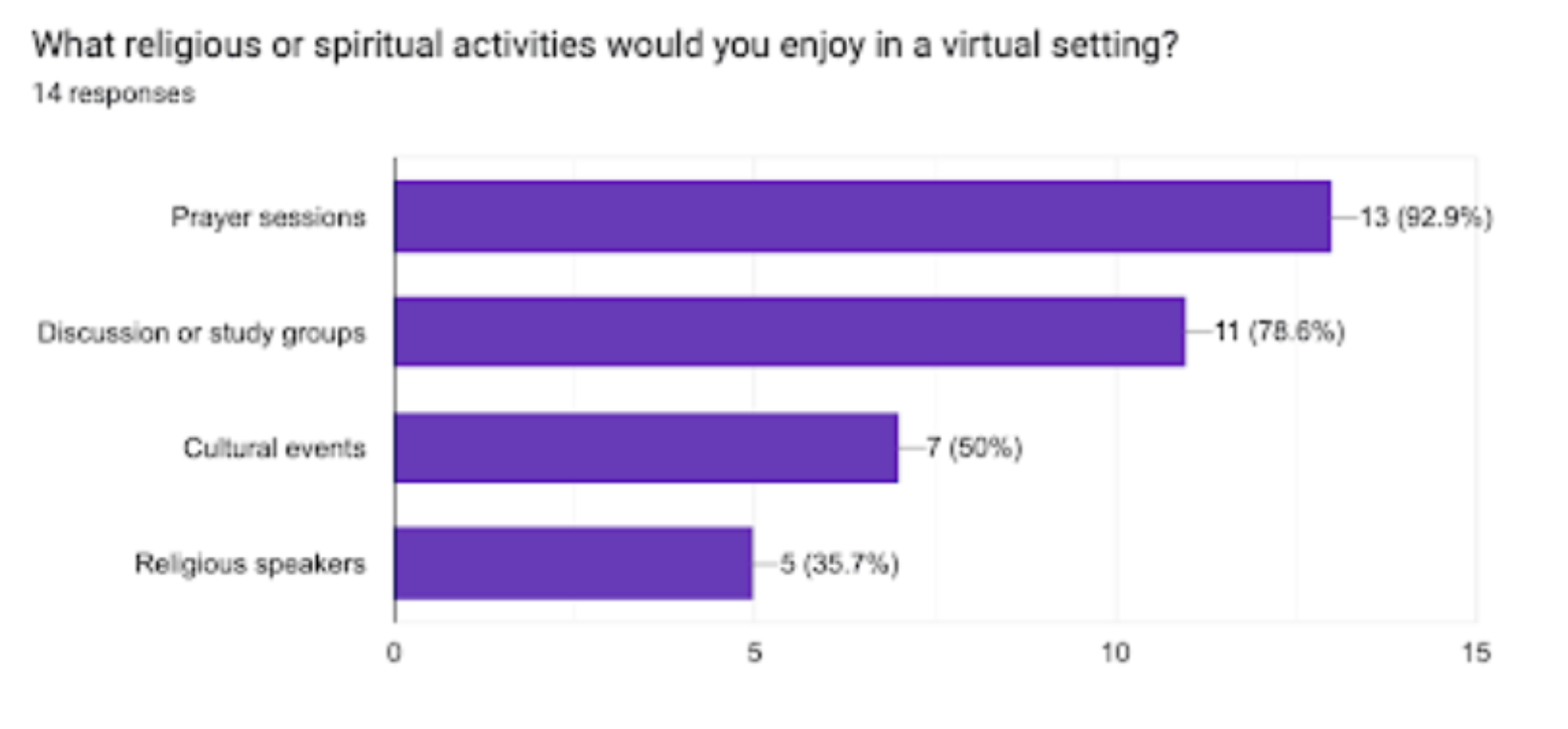VirtuConnect
This project explored how virtual reality (VR) can be used to reduce social isolation among older adults by creating immersive, culturally and religiously familiar environments. Designed with a user-centred approach, the system focused on accessibility, inclusivity, and ease of use, enabling older adults to engage in activities such as prayer, discussion, and reflection in virtual spaces that mirror their values and traditions. The work combined HCI principles, stakeholder research, and iterative prototyping to deliver a concept that fosters meaningful social connections and improves well-being through technology.
Low Fidelity Prototype
High Fidelity Prototype
The images from the report capture the iterative design process used to address the challenge of social isolation among older adults, particularly those unable to attend cultural or religious gatherings in person. The storyboard outlined how an elderly user could enter a VR environment from home, engaging in prayer or discussion within familiar cultural settings. This was developed into low-fidelity wireframes, focusing on accessibility with large text, simple navigation, and consistent icons to reduce cognitive load. Insights from stakeholder feedback then informed the high-fidelity prototypes, which introduced calming virtual spaces, private and group interaction options, and intuitive controls such as “Profile” and “Settings.” Later iterations added features like a home icon for easier navigation and voice commands to support users with limited dexterity. Collectively, the images demonstrate how the design evolved from sketches to detailed prototypes to create a VR platform that is inclusive, accessible, and socially meaningful for older adults.
The development of this project followed an iterative design cycle, beginning with the release of low-fidelity prototypesthat captured basic interface layouts and user flows. These early prototypes were then tested with potential users, and data was collected through questionnaires and feedback sessions, as shown in the figures above. This process not only highlighted the most valued features, such as larger text options, simple navigation, and prayer or discussion sessions, but also revealed areas of redundancy and features that were less impactful, allowing the team to refine the design before moving forward. Each round of testing and revision mirrored the principles of agile work practices, where continuous feedback directly informed incremental improvements. By cycling through ideation, prototyping, testing, and refinement, the project reflected real-world development processes, demonstrating how user-centred design, iterative testing, and adaptability are essential for delivering solutions that are both functional and aligned with stakeholder needs. The survey data visualised above served as a practical guide for prioritising usability and accessibility, ensuring that subsequent high-fidelity prototypes were tailored to the actual requirements of the target audience.
These charts present user study data collected across different stages of our project’s prototyping and fidelity iterations.




